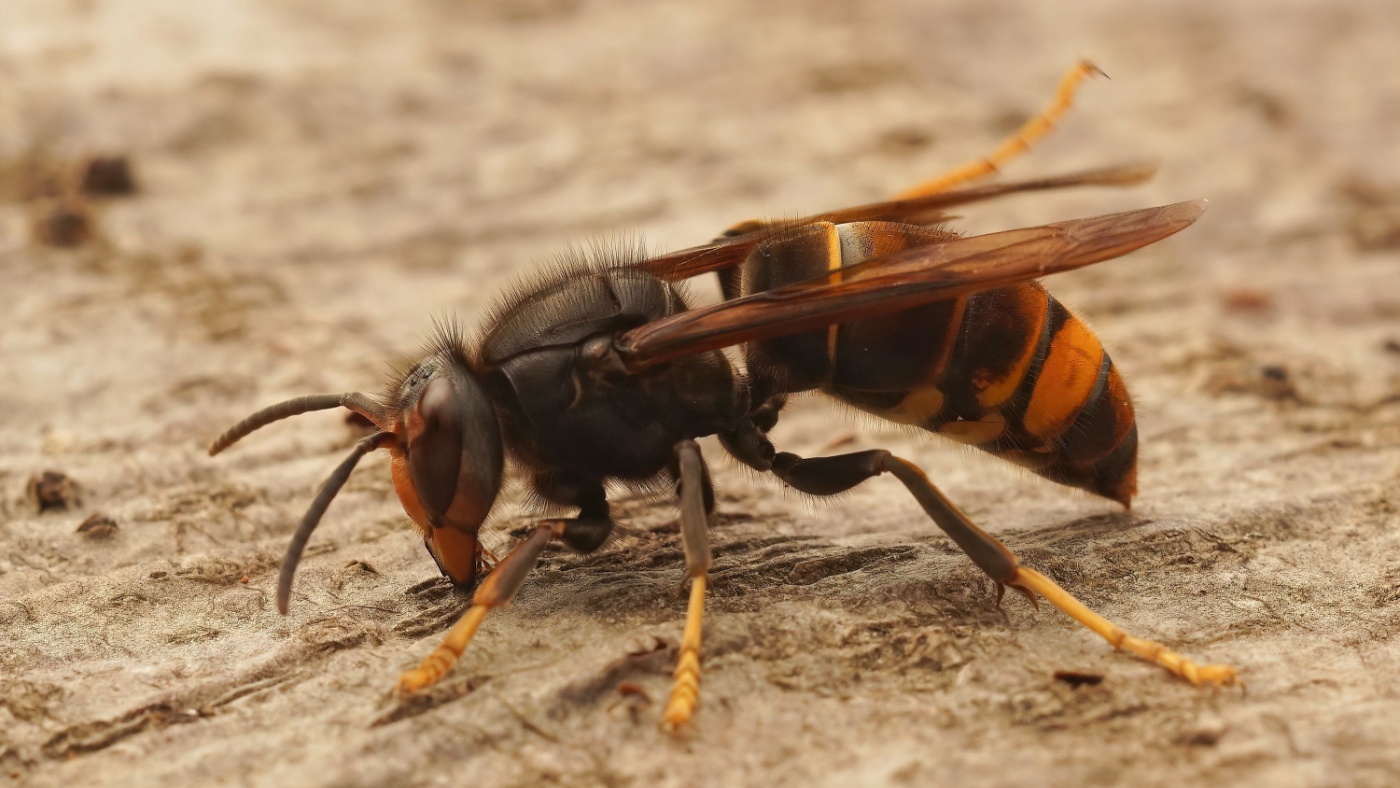The yellow-legged hornet is an invasive species that has been found in Georgia and the southern part of South Carolina but has not been found in North Carolina. The NCDA&CS’ Plant Industry Division wants people to be on the lookout for the insects’ early-stage nests, which are distinguishable this time of year by their size, color and location. Bill Foote is the Director of the Plant Industry Division.
- Our Plant Industry Division recently made me aware of an invasive hornet species that has been found in Georgia and South Carolina that they want people to be aware of. It is the yellow-legged hornet.
- The yellow-legged hornet, which is native to Southeast Asia, is especially devastating to honeybees and wild bees.
- Yellow-legged hornets will hang out around a honeybee hive and pick off the bees in mid-air when they leave the hive and carry them off to their nests. Or they can attack a hive, killing off the bees.
- These hornets have not been found in North Carolina, but residents and beekeepers can help keep a lookout for their early-stage paper nests that are typically built around eaves of houses, barns, sheds and other structures.
- Many people are probably familiar with the gray, paper-like wasp nests that are found in trees and other places.
- The early-stage nests for the yellow-legged hornet are brownish and can range in size from a ping-pong ball to a tennis ball. These details plus their locations around buildings help these early-nests stand out should you see one.
- Interestingly, the early nests are constructed by hornet queens to initiate new colonies so if you see brownish, paper nests around eaves, please take a photo and share it with our apiary staff.
- The yellow-legged hornet can be confused by several native insects including the cicada killer wasp, the bald-faced hornet, paper wasps, queen yellowjackets, wood wasps and robber flies.
- That’s why we are encouraging people to watch closely for signs of an early-stage nest versus the hornet.
- Suspected nests should be left undisturbed to allow for proper disposal by inspectors. And we don’t recommend killing any hornets, but rather grab a photo to help with identification.
- We have set up a reporting form where anyone can submit photos if they see something that may need to be followed up on. People can find that on our main webpage at www.ncagr.gov.


